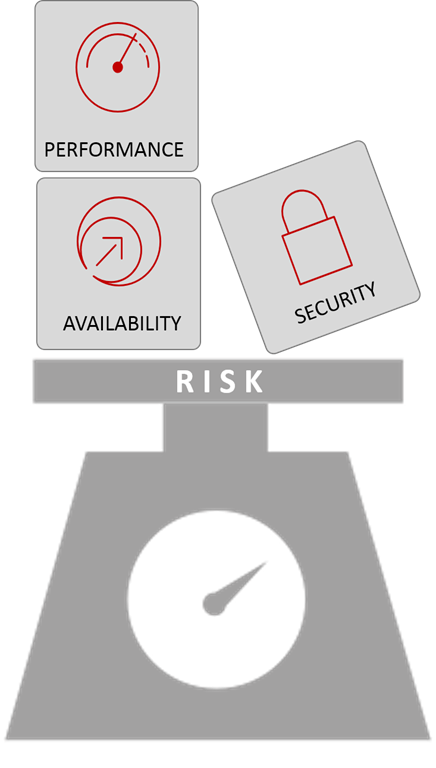パブリック クラウドが FPGA を採用している理由と、皆さんも採用すべき理由
2016 年のホリデー シーズン中に消費者向けの広告やリリースが殺到した中でこの発表を見逃した人もいるかもしれないが、 Amazon がハードウェアを採用すると発表したとき、かなりの騒ぎになった。 AWS のコンテナおよび HPC 部門のゼネラルマネージャーである Deepak Singh 氏は次のように述べています。 「特定の規模では、特殊なハードウェアとインフラストラクチャが非常に有効であり、特殊なインフラストラクチャを必要とする人にとって、FPGA は最適な選択肢の 1 つであると考えています。」
シン氏は、セキュリティや機械学習など、このような「特別なインフラストラクチャ」が特に役立つ「ユースケース」をいくつか挙げ、今日最も広く使用されている特殊ハードウェアであるグラフィックス アクセラレーションにも賛同しています。
FPGA や特殊なハードウェア (専用またはカスタムビルドと呼ばれることが多い) の使用は、データ センターでも目新しいものではありません。 特定の機能をハードワイヤリングすることの利点はよく理解されています。 ネットワーク スイッチは、本質的には、専用に構築されたハードウェアです。 一連の処理を高速かつ大規模に実行します。 データセンターでは、FPGA の使用も珍しくありません。 多くのセキュリティ デバイス、特に DDoS 保護専用のデバイスでは、着信 DDoS 攻撃を検出して拒否するために必要な着信トラフィックの検査を非常に迅速かつ必要な規模で実行するように特別に構成された FPGA が採用されています。
SSL と TLS に必要な暗号化処理に伴う複雑さを処理するように設計されたチップとボードを提供する市場が存在します。SSL と TLS はどちらも、Web アプリと API のセキュリティ保護、リモート アクセスの有効化、クラウドとの接続のセキュリティ保護に使用されます。 脅威が進化し、セキュリティ ソリューションがそれに対応するために調整されるにつれて、ハードウェアを介したこのようなターゲットを絞った暗号化処理の必要性は、機密性の高い消費者および企業のデータを保護しながら競争力を維持するために必要な速度と規模を確保するために非常に重要になってきました。

従来のハードウェアと FPGA の使用とパブリック クラウドの使用の共通点は、規模、つまり容量です。 しかし、パフォーマンスとコストの面で(良い意味で)メリットもあるため、パブリック クラウド プロバイダーにとってハードウェアの使用は魅力的です。 実際、FGPA (特にユーザーが再構成できるもの) とハードウェアの使用には、パブリック クラウドに適した選択肢となる 3 つの明確な (しかし関連性のある) 利点があり、プライベート クラウド (または従来のデータ センター) イニシアチブでも同様の利点を検討する理由となるはずです。
1. スピード。 ハードウェアがより少ないリソースでより速く機能を実行する能力は議論の余地がありません。 ハードワイヤードされた機能は、ソフトウェアで機能を複製するために必要なコードをロードして実行するために必要な内部遅延なしで実行できます。 専用に設計されたハードウェアは、暗号化と復号化に必要な非常に複雑な数学関数を、ジミー・ジョンズの配達員よりも高速に実行できます。 冗談じゃないよ。
企業やプライベート クラウドにとって、これは顧客向けのアプリの高速化を意味し、全体的なエンゲージメント率 (そして希望的にはコンバージョン率) が向上し、満足度と社内の生産性が向上します。 スピードは、運用リスクの 3 つの主要要素の 1 つであるパフォーマンスに対処するのに役立ちます。
2. 規模。 Singh 氏が指摘したように、規模は FPGA と専用ハードウェアの研究と採用の主な推進力の 1 つです。 それは、部分的には速度によって可能になります。 椅子の数(収容人数)が限られているテーブルに似たサーバーを検討してください。 早く座って食事ができれば、より多くの人が食事できるようになります。 接続容量 (単一のリソースで対応できるユーザー数を決定する) とトランザクションの実行速度の間にも同じ関係が存在します。 規模の拡大を支援することを、業界では「オフロード」と呼んでいます。 オフロードとは、汎用 CPU から専用ハードウェアへの処理負荷の移行を説明する簡単な方法です。これにより、汎用のコンピューティング リソースを他の機能の処理に使用できるようになり、全体的な速度と容量が向上します。
企業やプライベート クラウドにとって、これは少ないリソースでより多くのことを実現することを意味し、IT がビジネスとともに中断なく成長し、その成長をサポートするために必要なネットワークの複雑さが軽減されます。 スケールは、運用リスクの 3 つの主要要素の 1 つである可用性を回避するのに役立ちます。
3. 料金。 速度と規模を改善することで、トランザクションあたり(つまりユーザーあたり)のコストが削減されます。 コストを下げることは投資回収が早くなることを意味しますが、さらに重要なのは顧客あたりのコストが下がることです(逆にユーザーあたりの収益が向上します)。 サービスプロバイダーは、これが ARPU (ユーザーあたりの年間収益) などの主要なパフォーマンス指標に影響を与えることを認識しています。 クラウド プロバイダーも利益を生み出すためにボリューム (規模) に依存しており、ARPU の増加がビジネスの重要な部分であることを認識しています。
企業やプライベート クラウドにとって、これは顧客向けデジタル販売の利益率の向上と、社内アプリの生産性向上と比較した場合の優れた費用対効果分析スコアを意味します。
言うまでもなく、セキュリティのニーズに対応するために FPGA と専用のソリューションを採用すると、アプリがより安全になります。 これは、運用リスクの 3 番目の要素であるセキュリティに対処します。 ハードウェアの利点は、速度(実際にアプリを高速化できます)やスケールを犠牲にすることなく実行できることです。 独自のプライベート クラウド インフラストラクチャを構築する際には、より堅牢な環境への道として、専用のハードウェアと FPGA 対応プラットフォームを検討してください。
